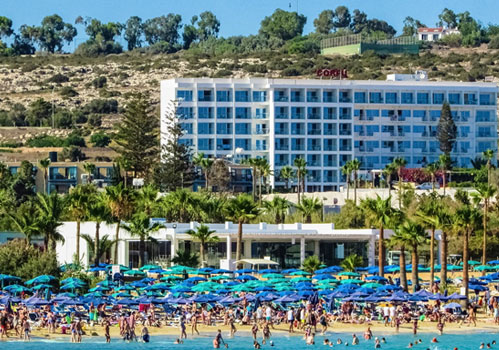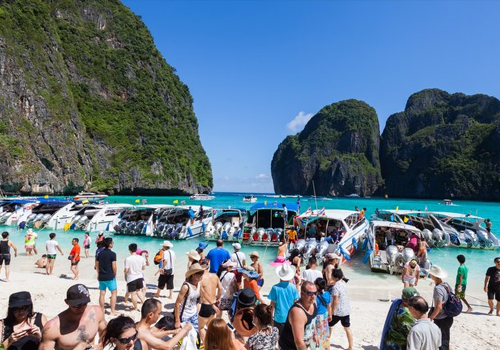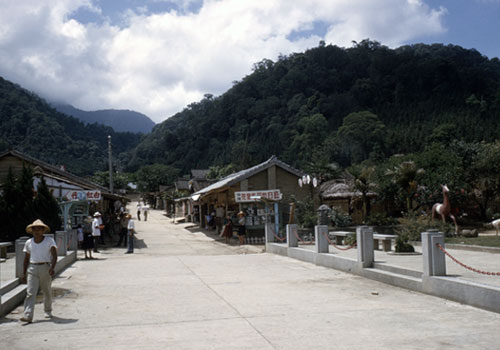
Table of Contents
Mass tourism occurs when a large number of people visit the same place at any one time. This includes sunbathing on the beach like the Costa del Sol (Spain), skiing in the mountains like the Swiss Alps, visiting national parks like Loch Lomond and The Trossachs (Scotland), or going to a theme park like Disney World Florida.
Mass tourism is often favored by governments and locals because it generates a lot of revenue. Group tours are often the most popular form of travel as it is often the cheapest way to get a holiday, with package deals booked through the internet or a travel agency.

Is Mass tourism Ruining The Tourist Places?
Mass tourism is a boon for billions of people around the world. It is now easier than ever to travel to exotic destinations where to relax, see and live.
However, mass tourism does not benefit the environment. Global tourism leaves a huge carbon footprint and also contributes to widespread environmental degradation worldwide by transforming relatively isolated and previously pristine natural areas into crowded tourist destinations.

Is Mass tourism Ruining The Tourist Places?
Then there is the increase in pollution rates caused by mass tourism. Eight out of 10 tourists go to coastal areas where the beach is the most popular destination. This is of little benefit to marine ecosystems. Beaches are covered in rubbish, fragile ocean areas are inundated with surging holidaymakers, and coastal waters are heavily polluted with sewage and untreated sewage.
During the tourist season, marine litter in the Mediterranean has been found to increase by up to 40 percent,” UN Environment noted. “Ironically, tourism, which often relies on the natural beauty of the land, has contributed enormously to its degradation in very visible ways.”
The Mediterranean is one of the most popular tourist destinations in the world, attracting around 220 million tourists to the region every year. Their number is expected to increase to 350 million within 20 years. About half of tourists go to the beach, and they often inadvertently wreak havoc on the environment with their sheer numbers.
“The massive development of tourism infrastructure has dramatically altered the natural dynamics of Mediterranean coastal ecosystems,” explained WWF. “For example, more than half of the 46,000 km of coastline is now urban, especially along the European coast. This infrastructure is a major cause of habitat loss in the region, and some sites are now beyond repair.”

Is Mass tourism Ruining The Tourist Places?
Even remote areas of the past have not been immune to the scourge of tourism. In the Galapagos Islands, for example, visitor numbers nearly doubled in just ten years to 275,000 in 2018. Over the past three decades, domestic tourism has grown at an annual rate of nearly 7%. Now, these unique, biodiverse islands, which had a formative impact on Charles Darwin’s theory of evolution through natural selection, are on the verge of an irreversible transformation.
However, not everything is gloomy. More and more tour operators and governments are realizing the importance of responsible tourism to protect unique biodiversity hotspots from further destruction. In an effort to save local marine life, Thailand has closed a scenic and popular beach in the Andaman Sea, famous as the location for the Hollywood movie “The Beach.” Before the closure, about 5,000 tourists arrived at the small beach every day, carrying about 200 motorboats. Since the closure of the beach, marine life in the area has slowly recovered.
Similar broad-based measures are being taken to address some of the worst impacts of global mass tourism.
One such effort is the Global Plastic Tourism Initiative, which aims to reduce the impact of plastic waste in the tourism industry. The massive amount of plastic debris that ends up in the oceans poses an existential threat to many species and the entire marine ecosystem.
Unless drastic action is taken, the situation, while bad, will only get worse. A widely cited statistic suggests that by 2050 there could be more plastic than fish in the ocean. “Plastic pollution is one of the major environmental challenges of our time, and tourism plays an important role in promoting solutions,” said the UN Environment Programme. “A lot of plastic used for tourism is discarded and often cannot be recycled, resulting in the lead to a lot of pollution.”

Is Mass tourism Ruining The Tourist Places?
Solutions to mass tourism’s high volume of plastic include phasing out all plastic packaging and problematic items, switching from single-use plastic to reusable plastic items, and adopting efficient recycling. “The problem of plastic pollution in tourism is too big for any organization to tackle alone,” said the Global Tourism Plastics Initiative. “To match the scale of the problem, changes have to be made across the travel value chain.”
Once in the ocean, plastic debris spreads around the world. Even beaches on remote uninhabited islands are now covered in plastic debris from ocean currents and tides. This is why reducing plastic waste should be a priority worldwide.
Minimizing the other harmful effects of mass tourism will be equally important if we are to save struggling ecosystems from further human-caused depredation. Each of us can do our part.
Since 2017, Saba Ghani has been serving as the talented and dedicated chief content writer for Pakistan Tour and Travel & EMHI Solutions. With her exceptional writing skills and in-depth knowledge of the travel industry, she has been instrumental in crafting engaging and informative content that captivates the audience. You can catch her at [email protected] or Twitter
Offering Pakistan Tour And Travel plans from Islamabad , Lahore & Karachi